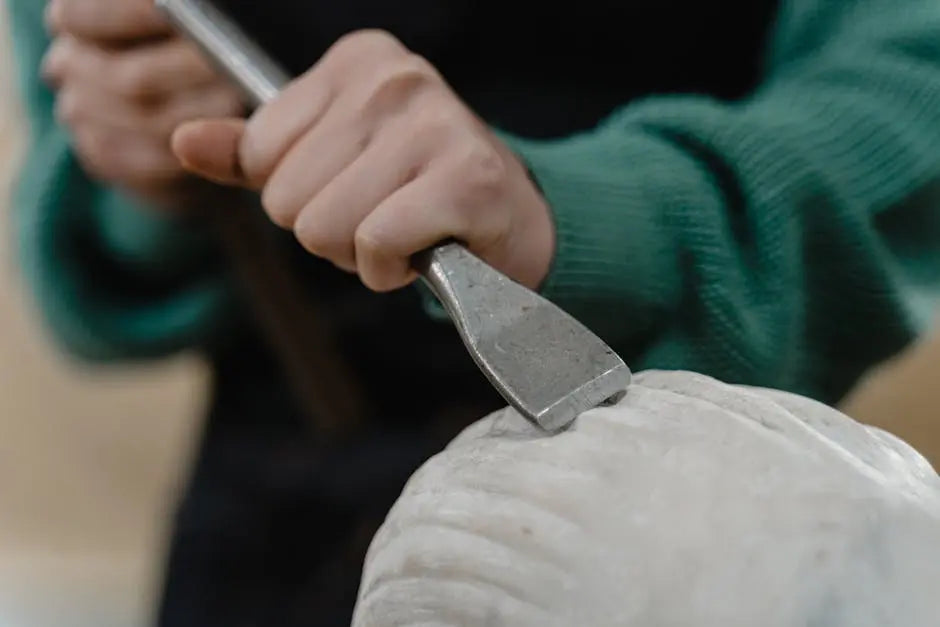My Cart
Your Cart is Currently Empty
FREE SHIPPING ON ALL ORDERS ABOVE $500


Alabaster stone carving is a historic and mesmerizing art form that has captured the fascination of artisans and enthusiasts for centuries. Known for its translucent beauty and versatile applications, alabaster stone offers a unique canvas for sculptors. This blog delves into the captivating craft of alabaster stone carving, exploring its history, techniques, and the creative joys it brings.
Used since ancient times, alabaster has been a favored material for artists, from Greek sculptors to Renaissance artisans. Its softness and beauty have made it ideal for intricate details and expressive artworks. Understanding its historical role provides a lens into its ongoing popularity in modern art and craftsmanship.
Alabaster, with its rich history, traces back to Egyptian times, where it was notably used for crafting exquisite items like perfume vessels. These artifacts were made without handles, giving us a glimpse into the ancient world’s creativity and utility. This marble-like material, which is also referred to as onyx marble, has been unearthed in significant sculptures like the statue of the Egyptian Queen Tiye. Such use underscores how alabaster intertwines with the chronicles of artistic progress What is alabaster and what is it used for?.
Alabaster is a form of gypsum, known for its fine grain and translucence. These qualities allow for delicate carvings and a unique play of light in the finished pieces. It is essential to comprehend these properties to fully appreciate the artistry and challenges involved in working with this material.
This mineral has a Mohs hardness rating of 1.5, making it one of the softer materials, which can easily be shaped yet requires careful handling due to its delicate nature. Its translucency allows light to diffuse through it, offering a magical glow, which is why alabaster has been favored in creating captivating lighting fixtures like lampshades Unique quality of alabaster.
Effective alabaster carving requires specific tools such as rasps, chisels, and sandpaper. Each tool plays a vital role in shaping, smoothing, and polishing the stone. Techniques like subtractive carving and attention to grain flow are essential for achieving the desired form without damaging this delicate material.
The art of carving alabaster, akin to Sculpting Grief into Art, involves a meditative process where the sculptor envisions the final form within the raw block. Patience and precision are key, and every stroke of the chisel must be deliberate to avoid cracking the stone or damaging its intricate grain pattern.
Artists often follow a systematic method when working with alabaster, starting from rough cuts with large chisels to refine the shape gradually. The final stages of the process involve sanding with progressively finer grits and sometimes even incorporating polishing agents to bring out the stone’s natural luster. These methods were famously employed in the creation of Robin Antar’s Sinuous Figures.
The flexibility of alabaster allows artists to explore a wide range of creative expressions. From abstract sculptures to practical applications like lamps and vases, the possibilities are endless. The stone’s ability to carry details and evoke emotions makes it a timeless choice for modern artists.
Alabaster’s versatility is especially evident in the Expressions in Stone collection, where the sculptor’s emotions and thoughts are intricately woven into each piece. Its use in contemporary settings for creating elegant home décor items further emphasizes its relevance and appeal, making each creation both a visual and emotional centerpiece.
Due to its soft nature, alabaster requires proper care to maintain its beauty. Regular dusting, sunlight protection, and avoiding moisture are key to preserving these exquisite works of art. Understanding maintenance ensures that alabaster creations can be enjoyed for generations to come.
Handling alabaster with care means using gloves to avoid oils and dirt from your hands etching into the surface. Stones like alabaster, due to their reactive nature, should ideally be kept away from liquids which might dissolve or stain their surface, ensuring that pieces retain their original finish.
Alabaster stone carving is not only an artistic pursuit but a journey into understanding and expressing through a medium that has stood the test of time. From the moment the first chisel strikes to the final polished masterpiece, it is a testament to human creativity and patience. Whether you admire alabaster in galleries or try your hand at carving it yourself, this craft continues to inspire and connect us to our artistic heritage.